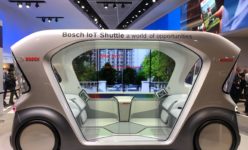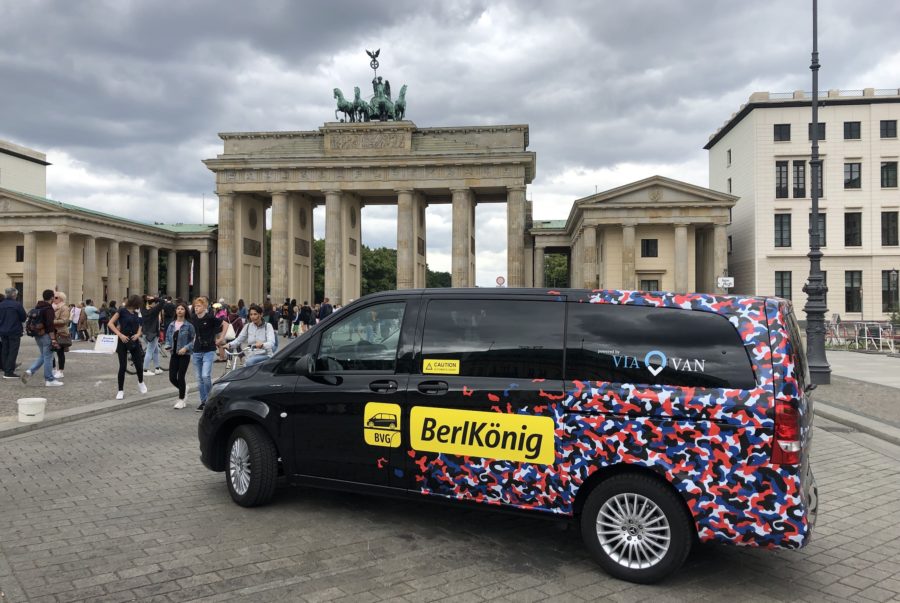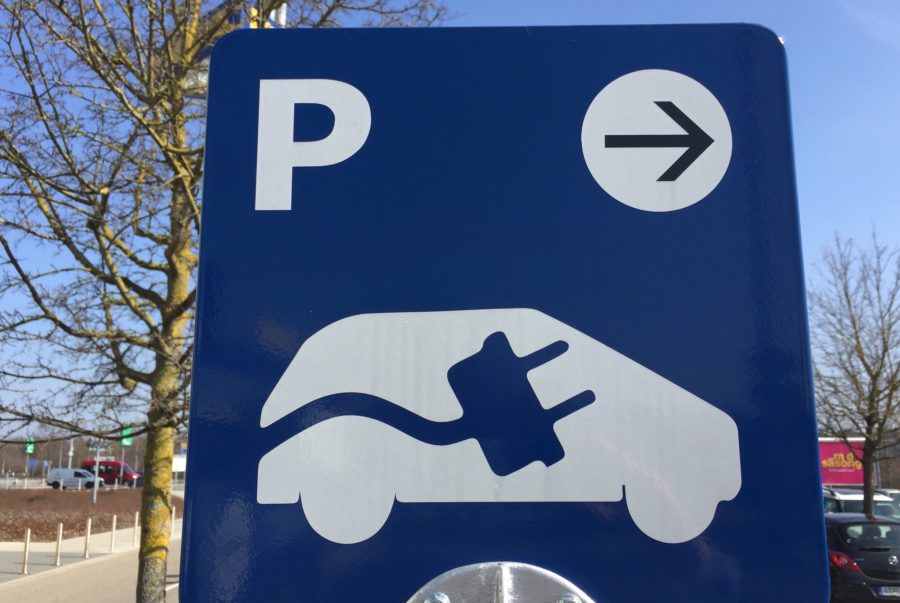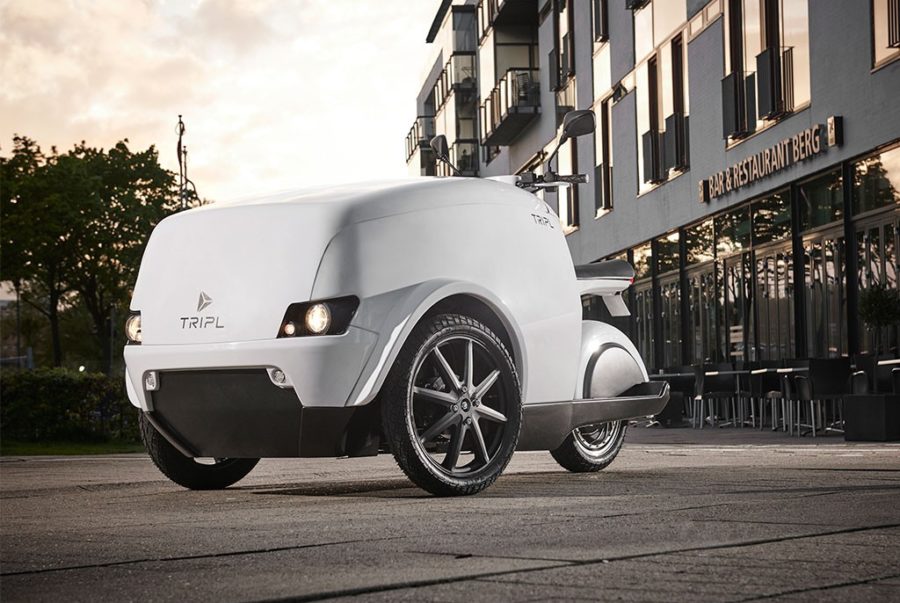Mercedes-Benz today presented its Vision URBANETIC, a revolutionary mobility concept. The Swabians launched their vision, which goes far beyond previous ideas about autonomous vehicles, in Copenhagen, of all cities, the showcase city for mobility these days in Europe. The vision abolishes the separation of passenger transport and freight transport. It is both a means of transport and a platform with which the Mobility Group thinks beyond the actual vehicle.
And despite all the caution that goes with the presentation of visions, one thing remains stuck in my mind after this day: Mercedes-Benz Vans is serious about the future. Autonomous driving on the basis of electrically powered vehicles, all garnished with a wide range of possible applications and an ecosystem with connectivity functions: the day in Copenhagen alone was a tough one.
Many of the more than 150 journalists from all over Europe who personally attended the event in the Danish Bella Center in Copenhagen had expected this presentation to be more of a prelude to the upcoming IAA Commercial Vehicles Fair. And it is, quite soberly seen, already a huge effort to fly the journalists of Hamburg, Munich, Milan and Madrid to a presentation in the Danish capital in order to then present a vehicle, which will be available in at the earliest in 5-10 years. The ecological balance of such an event is certainly not really positive.
And yet many of the announcements of the Vision URBANETIC convinced most of those present. In the speeches as well as in the workshops and technical discussions, the connectivity possibilities were likely to have been extended to the functions of autonomous driving.
The CEO of Mercedes-Benz Vans calls for a radical new way of thinking
Volker Mornhinweg is CEO of Mercedes-Benz Vans and enlightened the journalists present during his speech: We “have to radically rethink urban mobility”. Mobility means that in the future the city will move ‘more around us’. Because everything comes together on the street. Digitalisation is virtually laying a network around us. And it helps us to move through the city.
Digital mobility means that the flow of traffic and information can be accessed and shared on demand. Holistic mobility, however, requires the transformation of cities. We must therefore also completely rethink urban mobility. So much for his appeal.
Transformation of transport policy
The background to these transformation considerations are the urban challenges. More than 700 cities will have more than one million inhabitants in 2030. The cities themselves are under enormous pressure due to a lack of or ailing infrastructure. Too low a load factor for participants per vehicle, a lack of drivers, complex and expensive ways to increase mobility in the cities, high traffic congestion combined with passenger safety and finally an increase in CO2 emissions inevitably mean negative effects on the environment. This will ultimately lead to a reduction in the quality of urban life for citizens.
Is this vision already presentable today?
But how realistic is the chance of such an autonomous mobility offering? We have seen many beautiful videos and presentations of mobile future versions in the past. Ultimately, this is exactly the challenge that all mobility providers have to face today. The fact that Elon Musk, as a visionary, is providing the electrified, global passenger car market with its Tesla vehicles as a very practical example of implementation speed, is already an old hat. But autonomous driving, both in private and commercial environments, faces an even greater challenge.
The movers and shakers from the adVANce division at Mercedes-Benz went one step further today. In addition to the vision, they presented a vehicle and a whole series of platform services that are necessary for the introduction of an autonomous vehicle. And they pointed out the steps that need to be taken if we want to use autonomous vehicles as a safe, affordable and understandable solution on European roads.
The Mercedes-Benz Vision URBANETIC
To begin with, this post is less about a vehicle. This is also the reason why my mail is categorised in the LastMile ‘Innovation‘ category. Because the URBANETIC vision allows to transport people and goods in a sustainable, efficient and demand-oriented way – and at the same time meets the needs of cities, companies from a wide range of industries, city dwellers and travellers in an innovative way.
It is vehicle and concept at the same time and reduces traffic flows, relieves inner-city infrastructures and contributes to an improved urban quality of life. As part of a holistic system solution, the URBANETIC vision addresses the urban challenges of the future and offers innovative solutions.
ViaVan as a springboard for autonomous driving
The autonomous vehicle is initially based on the cooperation between Mercedes-Benz Vans and the American VIA Transportation. In the ViaVan joint venture, both companies are working on new solutions for passenger transport. Their services in Europe can already be experienced live in Amsterdam and London and, since last weekend, also in Berlin.
ViaVan offers a kind of preliminary version of the vision URBANETIC system as a ridepooling opportunity. ViaVan helps with the strategic context, because the best carpooling algorithm is developed bit by bit from its journeys. Combined with the knowledge of building vehicles that have been tried and tested globally and thanks to a global service and sales network, the Mercedes-Benz managers are planning to successively expand these preliminary stages on the way to autonomous driving.
Viavan one step closer to autonomous driving
And the Swabians also use their personal experience with the ViaVans. For example, the QR code scanner was built in the ViaVan vehicle to make it easier for the user to find the right vehicle. When a Mercedes-Benz employee called a ridepooling vehicle in New York City, he suddenly had three vehicles of the same type standing in front of him. In order not to get into the wrong car, a unique recognition feature had to be created for both the vehicle and the user. The development of this connectivity interface was therefore based on a user’s personal experience. Welcome to the age of customer-based digitalisation.
Read more from the category “Innovation”:
The concept for the last mile thought through to the end
The visionary concept of the Vision URBANETIC is based on an autonomously moving, electrically driven chassis, which can accommodate different swap bodies for passenger transport or goods transport. This is the LastMile concept for both passengers and goods. As a ridepooling provider, the vehicle can transport up to twelve passengers. Up to ten EPAL pallets can be transported in the cargo module.
The vehicle
The Vision Van variant presented in Copenhagen shows a vehicle length of 5.14 metres with a loading space length of 3.70 metres. The concept also integrates an IT infrastructure that analyses supply and demand in a defined area in real time. The result is an autonomous fleet whose routes are planned flexibly and efficiently on the basis of current transport requirements.
“Mercedes-Benz partner Via already serves 1.2 million rideshares per month in New York City.”
The interior
Thanks to fully automated and driverless driving, the Vision URBANETIC significantly reduces operating costs. With the exception of charging times for the battery electric drive and maintenance stops, every vehicle can also be used around the clock 365 days a year. This makes solutions profitable in local public transport, for example, that would not be economically viable with a driver. Ultimately, this type of mobility will mean less vehicles on the roads.
But autonomous availability also has huge advantages for commercial applications. The concept provides an answer to an ever-increasing challenge in the logistics sector: the lack of drivers. Even today, it is very difficult or even impossible for companies to fill vacancies.
The elimination of the driver’s workplace also creates space for interior design. Steering wheel, pedals, instrument panel and the entire cockpit are a thing of the past. The space that has become available allows additional passengers or a higher volume of goods to be transported.
Connectivity is King
Thanks to full networking, the evaluation of local information – for example about concerts and events in the city – and intelligent control mechanisms, the system can not only analyse current needs, but also learn from them. In this way, future requirements can be anticipated and, for example, responded with an increased number of vehicles after a concert. The digital link ultimately leads to shorter transport times for the traveller and his passenger (or his goods on board). And the cities are also winning. Thanks to intelligent control centers that are constantly being improved, vehicles can optimise processes, reduce waiting or delivery times, avoid traffic jams and generally serve even increased demand quickly and more efficiently.
Fully networked and part of a comprehensive ecosystem
With the URBANETIC vision, Mercedes-Benz Vans is pursuing an ambitious goal: to transport more people and goods with fewer vehicles on an almost unchanged road infrastructure in order to relieve the strain on inner cities and at the same time meet continuously growing mobility requirements and customer wishes. Ultimately, this would lead to an improved quality of life in the inner cities: with flexible and comfortable passenger transport, efficient and sustainable freight transport, significantly lower pollutant and noise emissions, and more scope for urban design.
This vision of those responsible for Mercedes-Benz Vans shows me how the OEM has changed from a vehicle manufacturer to a mobiity solution provider. No question, many of today’s slides and presentation contents were clear visions and far from reality. But autonomous driving requires a long and sometimes tough approach by evaluating the driving data and constantly developing vehicles, software and the environment. Also, I am taking that with me from today in Copenhagen, there are many clever people sitting at Mercedes-Benz to help develop autonomous driving solutions. I will certainly continue to observe this over the next few years and will be happy to be measured against the statements I made in this article. I promise!
Post a Comment
You must be logged in to post a comment.


























